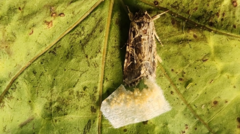In a groundbreaking study, scientists at Tel Aviv University have unveiled a hidden world of communication between plants and animals, where sound plays a crucial role in survival. Their research highlights how animals, particularly female moths, are able to detect and respond to distress signals emitted by tomato plants. This finding underscores the potential for a complex ecosystem that relies on auditory cues.
For the first time, the research team demonstrated that moths avoid laying eggs on tomato plants that produce distress signals when stressed or unhealthy. Two years ago, they initially discovered that plants make sound when in distress - these noises fall outside the range of human hearing but can be identified by various insects, bats, and some mammals. “This is the first demonstration ever of an animal responding to sounds produced by a plant,” noted Prof. Yossi Yovel.
The study included meticulously controlled experiments to ensure that the moths' behavior was influenced by sound rather than visual cues from the plants. Moving forward, the researchers plan to explore whether other species, including insects and mammals, also base their behavior on the sounds emitted by plants, influencing decisions like pollination and shelter-seeking.
Prof. Lilach Hadany added insight into potential plant communication, proposing that plants might share information through sound and adapt their behaviors, such as conserving water in drought scenarios. “If a plant is stressed, the organisms most concerned about it are other plants,” she remarked.
While it is essential to clarify that plants are not sentient, the findings suggest that the sounds produced result from physical changes in the plants due to stress. If animals are tuned into these signals, they may have evolved along with plants to maximize mutual benefits through sound.
The investigation specifically focused on female moth behavior linked with tomato plants, considering that moths typically select locations for egg-laying based on the health of the plant. As it turned out, the sound played a pivotal role, guiding moths away from dehydrated plants.
The results of this study have been published in the peer-reviewed journal eLife, heralding a new chapter in our understanding of plant-animal interactions and revealing a vast, largely unexplored field in ecological research.






















